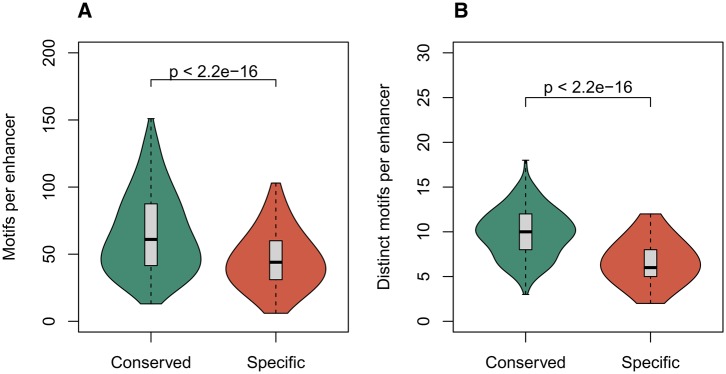Fig. 2.
—Conserved-activity enhancers have greater TF binding motif density and diversity than species-specific-activity enhancers. We quantified the total number of TF binding motifs (JASPAR, Core Vertebrates [Mathelier etal. 2016]) and of distinct TF motifs within the enhancer sequences. The 283 conserved-activity enhancers have (A) significantly more TF binding motifs per enhancer (median of 61 vs. 44) and (B) binding motifs for significantly more distinct TFs (median of 10 vs. 6) than the 1,913 human-specific activity enhancers. Each box covers the first through third quartiles, and the whiskers extend to the most extreme data point within 1.5 times the interquartile range of the full distribution. The distributions are summarized using the R vioplot package with default parameters applied to each distribution with boxplot outliers removed. The enhancers were standardized by length and compared with the Mann–Whitney U test.

